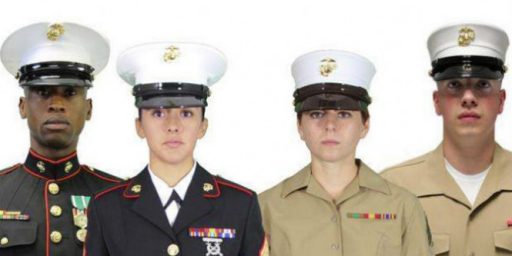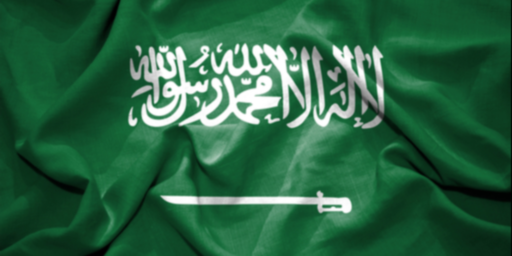Good Marines Make Good Neighbors
Mark Mazzetti reports on the revival of a Vietnam-era Marine counterinsurgency program that may have promise for Iraq.
[T]he 1st Marine Division is resurrecting one of the few tactics that worked in Vietnam, the corps’ counterinsurgency strategy: the “Combined Action Program,” or CAP. The revival of this counterinsurgency program represents an experiment by the 1st Marine Division, which replaces the Army’s 82nd Airborne Division in Iraq next month. With CAP, the Marines are betting that a kinder, gentler approach to Iraqis will pacify the bloody Sunni Triangle more effectively than the 82nd Airborne’s harsh tactics have.
CAP was designed by Marine strategists as an alternative to the Army’s “search and destroy” tactics used throughout the Vietnam War. From 1965 to 1973, Marine platoons—along with South Vietnamese Popular Forces, or PFs—spent months living in villages in Central Vietnam. “In the places where we used the CAP program, we ran the Viet Cong and NVA out of the area,” says Noel Williams of the Marine Corps Warfighting Laboratory, which is assisting the 1st Marine Division as it applies the Combined Action Program to Iraq. The Marines and PFs worked in rice paddies with impoverished villagers during the day and ran patrols against the VC at night.
By living among the Vietnamese instead of on a fortified American base, CAP Marines forged relationships that helped develop a web of local intelligence. “It was just like running a neighborhood watch, except that I was scared all the time and people were shooting at me,” says Ed Matricardi, who in 1967 served in a CAP platoon in a village south of Phu Bai.
***
Marine commanders believe Iraq’s Sunni Triangle is ripe for the same kind of “deliberate, mild” tactics—a CAP 2.0. The 1st Marine Division is training select units to live in Sunni villages along with members of the nascent Iraqi Civil Defense Corps. The goal is to build trust among the locals and get them to hand over critical intelligence about the Iraqi insurgency. CAP platoons are receiving more intensive language and cultural training than regular Marines. The hope is that they will be able to run more effective patrols in Baathist towns such as Fallujah and Ramadi, better penetrate the insurgency’s sources of money and arms, and help bring legitimacy to the ICDC. (In Marinespeak, Lt. Col. John Freda of the 1st Marine Division explains it this way: “We need to find the people who need killing, and differentiate them from those who don’t.”)
At least publicly, Marine officers at Pendleton deny that CAP 2.0 is an intentional dis of the Army’s current counterinsurgency tactics in the Sunni Triangle. Yet it’s clear the Marines think more velvet is needed on the velvet fist. Some of the Army’s heavy-handed tactics, especially those used by 82nd Airborne soldiers in towns throughout the Sunni Triangle, have been pilloried inside the Pentagon. Many military officers, especially within the special operations community, believe that the “show of force” raids in places like Fallujah have served only to infuriate segments of the Sunni population and broaden popular support for the insurgency. It didn’t help matters back in November when the 82nd Airborne’s Maj. Gen. Charles Swannack boasted that the Army’s get-tough approach in central Iraq—which included airstrikes in Baghdad and encircling some villages with concertina wire—was akin to using “a sledgehammer to crush a walnut.”
This demonstrates a vital difference between the Marines and the Army. Because they’re smaller, the Marines are often more adaptable and less specialized. The 82nd Airborne has to be deployable at a moment’s notice anywhere as a self-sustaining, all-purpose light infantry unit. Counterinsurgency operations are the province of special operations forces. Marine Expeditionary Forces, on the other hand, are generalists who can train up for a specific mission type before deployment. While there are special units, like Force Recon and snipers, within the Corps, there is really no equivalent of Special Forces or Rangers. If Marines need to perform an SF-type mission, they simply train units up to task.





Something of tangential interest–the Marines have recently started to form an element that is part of Special Operations Command (historically, they have had units they call “Special Operations Capable” that were not formally considered Special Operations forces). The URL I listed provides entry to a Strategy Page discussion about the issue.